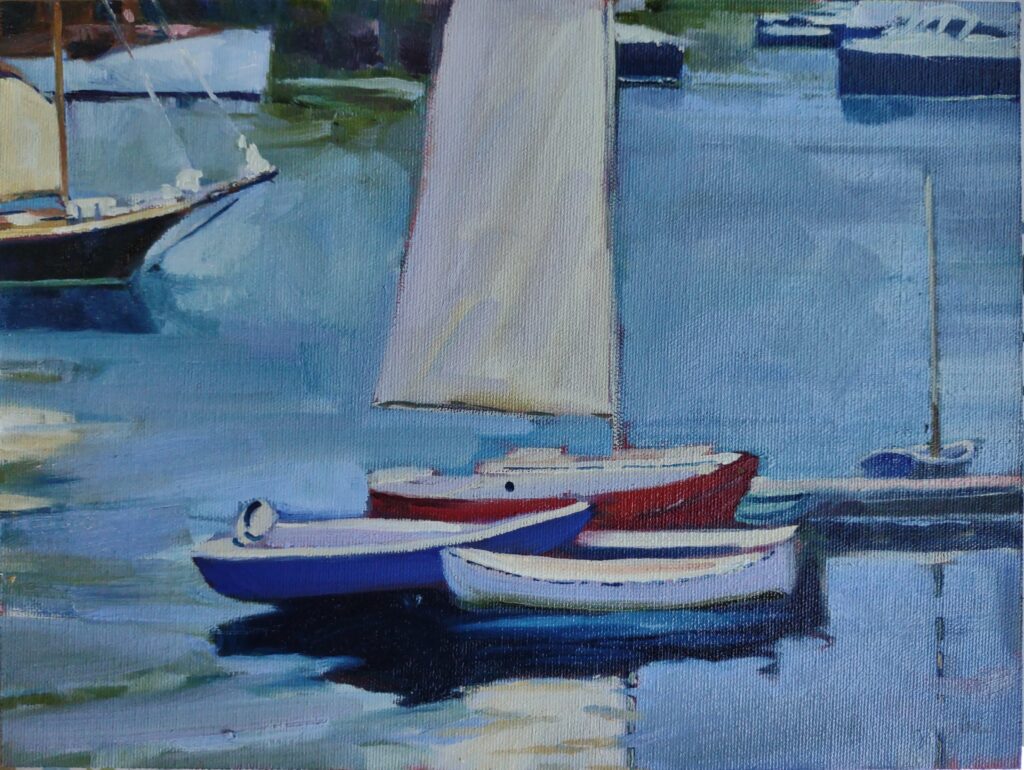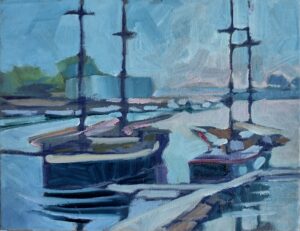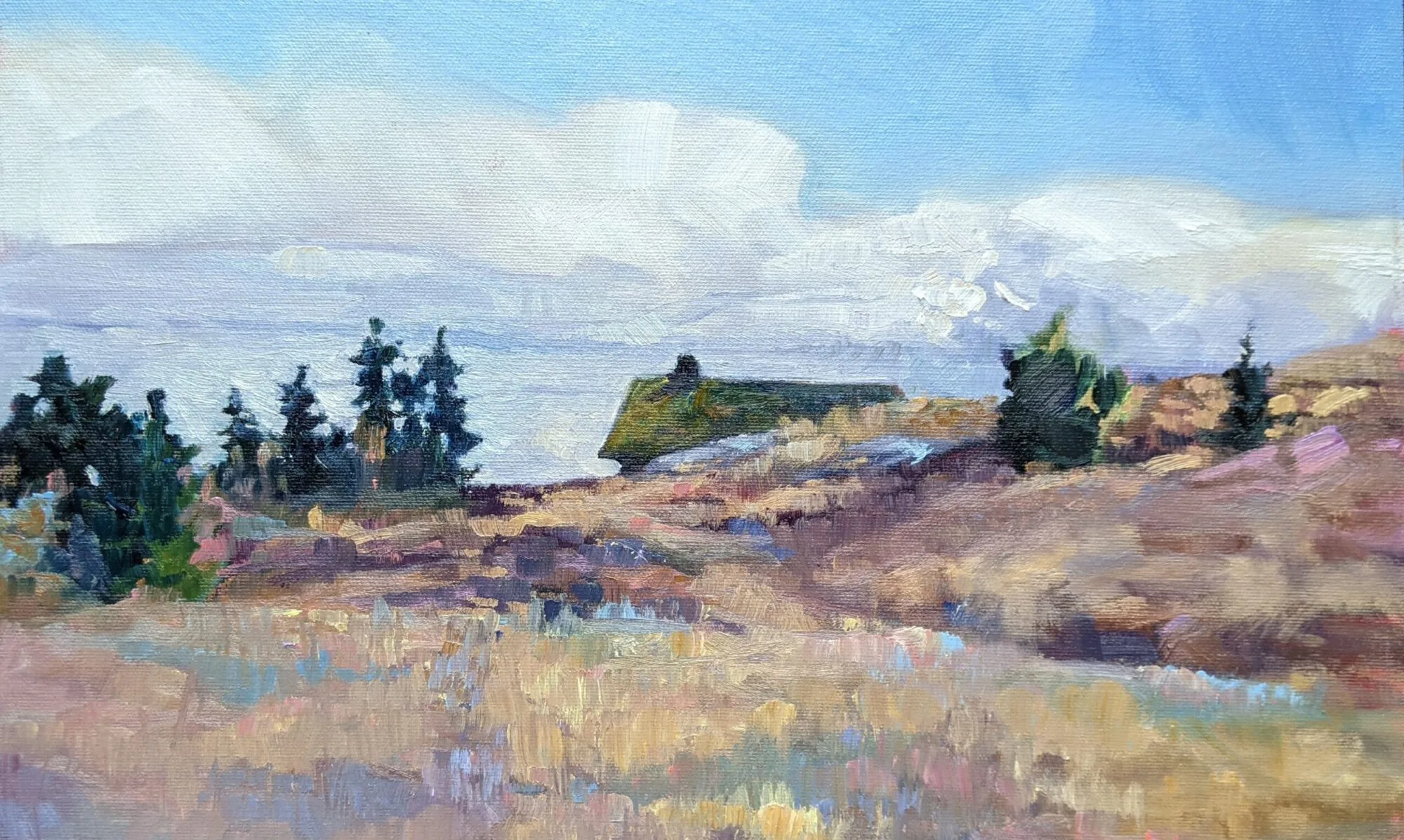 Drying Sails, oil on canvas, 9×12, available on my website later this morning.
Drying Sails, oil on canvas, 9×12, available on my website later this morning.
When I’m wondering, “is this painting finished?” the answer is usually yes.

I’ve been carrying a small 8×10 around in my backpack for a few weeks, hoping to run into Ken DeWaard so I could ask him if he had a reference photo from that day. It’s of the ketch Angelique, on the left, and Lazy Jack II. I’ve got a good visual memory, but that was last summer or perhaps the summer before. Not only has the detail faded in my mind, any sense of what I wanted to ‘finish’ has disappeared as well.
I caught up with him Tuesday, when our respective painting classes ended up on the same beach. (If you haven’t seen this story from Owl’s Head, it’ll encourage you to keep your footsies out of deep water this summer.) Ken shook his head and said, “I got nothin’,” and laughed. “If it was earlier this summer, maybe.” Such a day is indistinguishable from a thousand other painting days, unless it results in a painting one loves enough to keep. (We paint a lot of dreck along the way.)
I propped it up on a bench and pondered. Is it really not finished? There’s detail I’d love to add, and the masts look chunky. But they so often do on windjammers, which were originally built not as yachts but as working boats. The color is coherent and evocative, and the brushwork is unified and expressive. What’s really left to add?

The painting of Owl’s Head lobster boats, above, is another example of one I toted around until I realized it was done. I recently popped it into a frame and now I love it just as it is.
I’m in a boat-painting tear, and it’s not always going well. “I’m channeling George Bellows,” I told Bobbi Heath as I hacked farther and farther into the weeds on a canvas that probably ought to go in the woodstove. As always, the problem started out compositionally, but the students in my Zoom critique class suggested that I get rid of a big green dumpster on the dock. That helped, but it’s still way too busy and way too bright-without Bellows’ incisive wit and commentary. No reference photo will save this canvas. It’s overbaked and underthought.
Meanwhile, I met Björn Runquist to practice our chip shots in advance of Camden on Canvas. “There’s a nice angle of Lazy Jack from that bench over there,” I told him. Had either of us been smarter, we might have asked why I wasn’t painting that schooner myself. The answer, riding in my subconscious, is that she’s a daytripper. You can’t trust her. You get her limned in, all beautiful, and she up and leaves you. Sure enough, that’s what happened to Björn. Oops.

It had rained, so Lazy Jack was running her sails up and down to dry them off. This is a subject that fascinates Ken DeWaard, so I try to avoid it. Occasionally, however, it’s irresistible, because it adds another compositional dimension to boats in harbor. Having learned my lesson, I finished the painting, at top, quickly, before I forgot what I was doing.
I’m absolutely horrible at taking reference photos. I get caught up in the moment and the light. By the time I remember, it’s too late. Still, it’s something I’ve resolved to do better. But taking the painting back into the studio and adding details has the potential to stomp on its beauty. When I’m wondering, “is this painting finished?” the answer is usually yes.


You are sooo right about this! I try very hard to be happy with what I’ve done with a plein air painting while I’m at the scene. It’s really hard to bet back into it later, and it usually turns out badly. Not to mention I don’t like the feel of putting wet paint onto dry.
This is the right webpage for anyone who hopes to understand this topic. You realize so much its almost tough to argue with you (not that I actually will need toÖHaHa). You certainly put a brand new spin on a subject that has been discussed for many years. Excellent stuff, just wonderful!